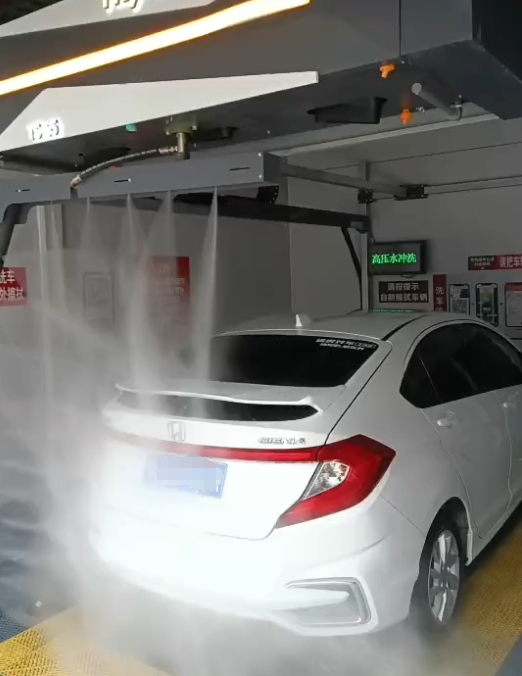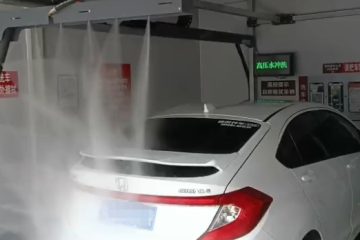The humble car wash has come a long way. Gone are the days of solely relying on hand-scrubbing and buckets of soapy water. Today, automated car washes are dominating the industry, offering a faster, more efficient, and often more environmentally friendly way to keep our vehicles sparkling clean. But how do these automated marvels work, and what are the advantages and disadvantages of using them?

The Mechanics of Automated Cleaning:
Most automated car washes operate on a conveyor belt system. Your car is guided onto a track, and then moves slowly through a series of automated stations. These stations typically include:
Pre-wash: This stage uses high-pressure water jets to remove loose dirt and debris, preparing the vehicle for the main cleaning process.
Soap and Scrub: A combination of high-pressure soap dispensers and rotating brushes (or sometimes, soft cloth applicators for a touchless experience) work together to clean the car’s exterior. The type of brushes and cleaning agents used can vary widely depending on the car wash.
Rinse: High-pressure water jets thoroughly rinse away the soap and dirt.
Wax and Dry: Many automated car washes include a waxing stage to add a protective layer and shine. The final stage often involves high-powered air blowers to dry the car.
Beyond the Basics: Technological Advancements
The technology behind automated car washes continues to evolve. We’re seeing advancements such as:
Touchless washes: These systems rely on high-pressure water and specialized cleaning chemicals, eliminating the risk of scratches from brushes.
Sensor-based systems: Sophisticated sensors detect the size and shape of the vehicle, adjusting the cleaning process accordingly to avoid damage.
Water reclamation systems: Environmentally conscious car washes are implementing water recycling systems to minimize water consumption.
The Pros and Cons of Automated Car Washes:
Advantages:
Speed and Efficiency: Automated washes are significantly faster than hand washing.
Convenience: They require minimal effort from the user.
Cost-effectiveness: They are often cheaper than professional hand washes.
Consistent Results: The automated system ensures a fairly consistent clean every time.
Advanced Cleaning Options: Many offer options like undercarriage cleaning, tire cleaning, and specialized waxes.
Disadvantages:
Potential for Damage: While technology has improved, there’s still a risk of scratches or swirl marks from brushes, especially with older or poorly maintained equipment. Touchless washes mitigate this risk.
Limited Control: You have little control over the cleaning process.
Not Ideal for Delicate Finishes: Some delicate paint jobs or specialized finishes may be better suited to hand washing.
Environmental Concerns: While some are eco-friendly, others may use large amounts of water and harsh chemicals.
Conclusion:
Automated car washes have revolutionized the way we clean our vehicles. While they come with some drawbacks, their speed, convenience, and cost-effectiveness make them a popular choice for many drivers. However, it’s crucial to choose a reputable car wash with well-maintained equipment and environmentally friendly practices to ensure a clean, safe, and sustainable car wash experience. As technology continues to advance, we can expect even more innovative and efficient automated car washes to emerge in the future.




